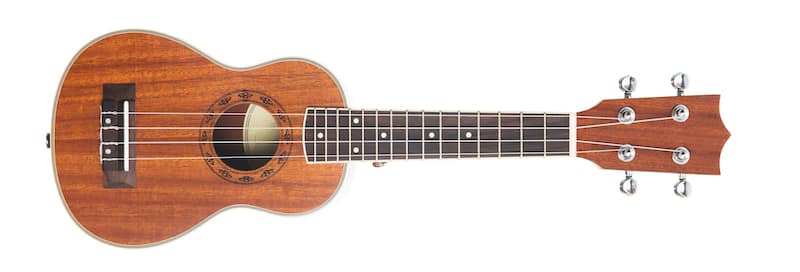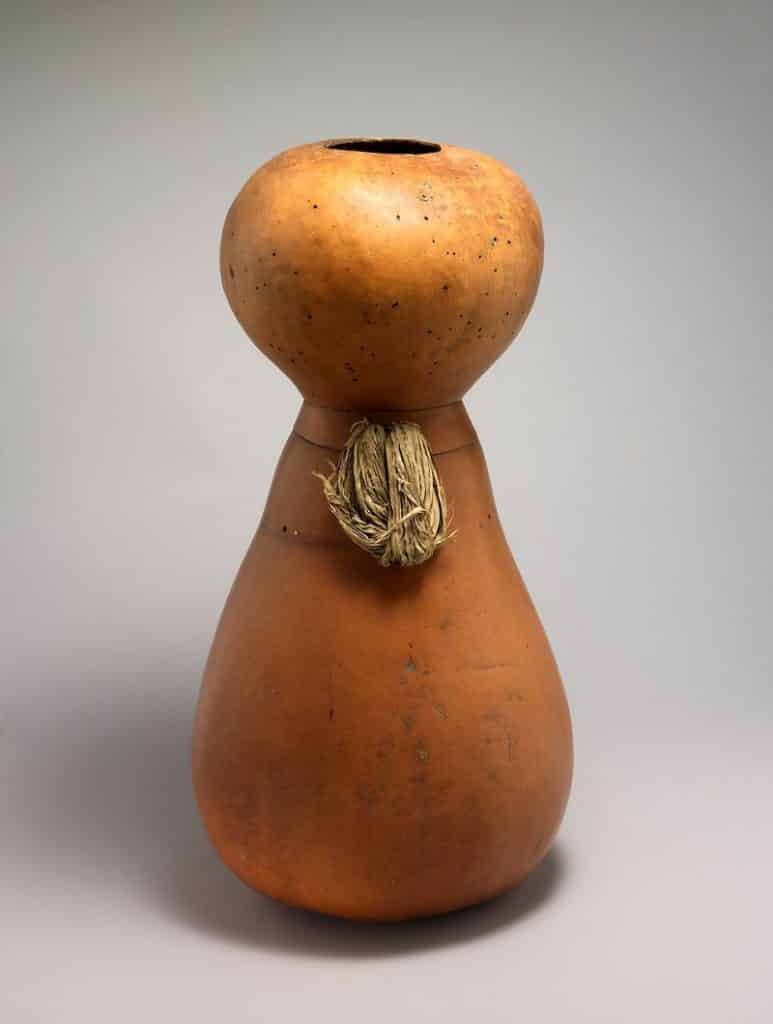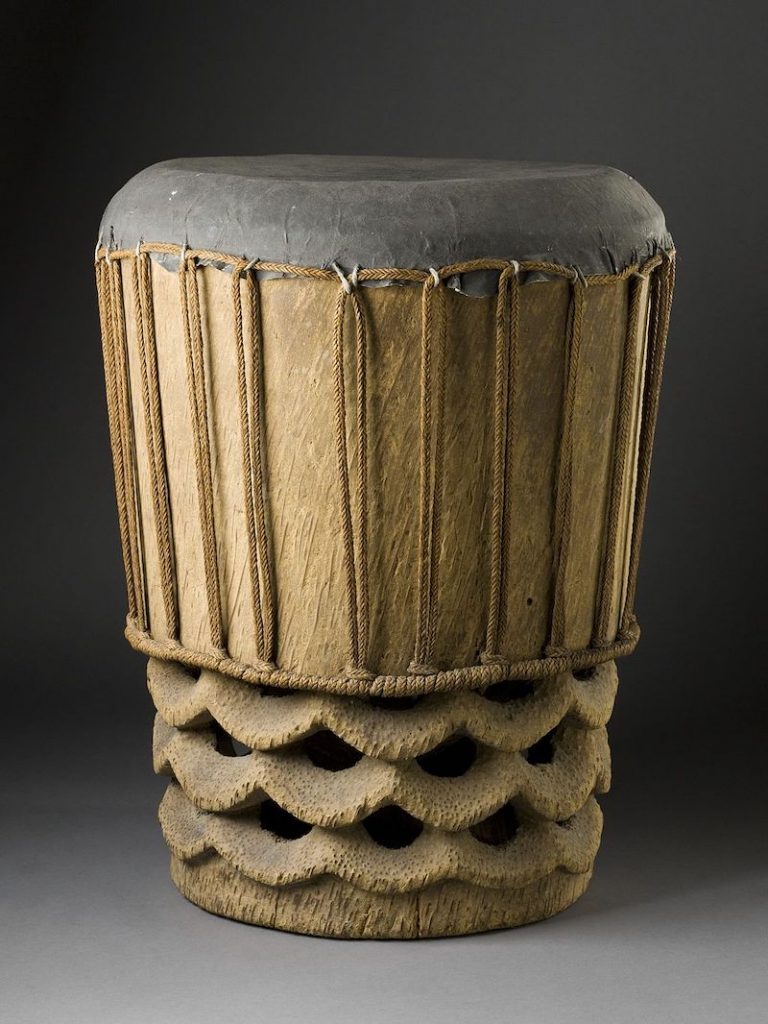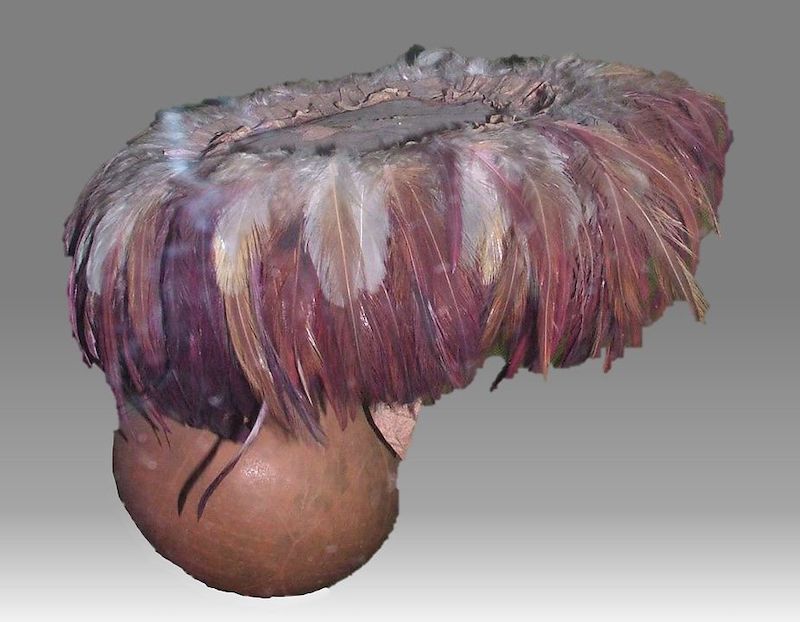Hawaii is more than just a popular vacation destination surrounded by the ocean and the majesty of volcanic islands. Hawaiian culture is an essential part of the islands’ history, and music is a large part of that culture.
When you think of the Hawaiian islands and the music of Hawaii, the first two things that might come to mind are the ukulele and hula dancing. However, the music of Hawaii goes far beyond the ukulele, and the hula has a much more deep historical and cultural significance than the tourist dances we see.
In this post, we’re going to explore 12 traditional Hawaiian instruments and how they are used. Most of these instruments are part of the traditional Hawaiian dances, chants, and ceremonies and showcase the beauty and richness of native Hawaii.
1. Ukulele

Of course, the most famous Hawaiian instrument is the ukulele.
There’s no need to describe it – the growing popularity of this instrument has made it a part of worldwide culture due to Israel Ka’ano’i Kamakawiwo’ole (IZ), one of the most famous ukulele players in the world.
He played an essential role in bringing this instrument to the mainland.
But, while the ukulele is the most popular Hawaiian musical instrument, it didn’t technically originate in Hawaii.
Originally known as the “machete de braga” in Portugal, this instrument was brought to the islands by Portuguese immigrants.
Native Hawaiians quickly picked up the machete and made it their own.
The ukulele is now used all over the world and especially in mainland America.
While IZ made it famous with his “Somewhere Over the Rainbow” arrangement, artists such as Ingrid Michaelson, Taylor Swift, John Lennon, and Twenty-One Pilots have used the ukulele in their music.
The sweet and simple sounds of the ukulele make it perennially popular.
2. Ka’eke’eke
Many traditional Hawaiian instruments are percussion instruments made from naturally occurring materials and the ka’eke’eke is one of the most common examples of Hawaiian percussion.
These instruments are hollowed-out bamboo shoots made to be pipes or tubes and they function as drums during the traditional hula dance.
They are held perpendicular to the ground by dancers or musicians and banged down rhythmically to create a hollow drumming sound.
Generally, ka’eke’eke are made in various sizes to create different pitches of sound throughout the dance.
3. Xaphoon (Pocket Sax)
The xaphoon (also known as the pocket saxophone) is one of the newest Hawaiian instruments.
Created in 1972 in Maui by Brian Whitman, it resembles a flute or recorder.
This reed instrument has a lower, richer sound than your average recorder – musicians have compared it to the saxophone for its rich and mellow sound.
Because the xaphoon is so new, it isn’t generally used in hula dancing or any traditional Hawaiian settings.
However, due to its unique sound, the xaphoon has been used by mainstream musical artists around the world.
Simon and Garfunkel even used the xaphoon in many of their albums throughout the late twentieth century.
4. Ipu

Another traditional Hawaiian percussion instrument, the ipu is a common sighting at luaus.
Ipus are made from the gourds that grow on the islands.
Providing an added layer of rhythm for hula dances, ipus have several different sizes and sounds, depending on where and how they are hit.
However, the ipu isn’t merely a percussion instrument.
It also represents many important parts of island culture and gourds are a symbol of life in many ways for native Hawaiians, representing both food and natural medicinal benefits.
There are two main types of ipu drums: the ipu heke, which is made from two gourds, and the ipu heke ‘ole, made from one gourd.
Ipu heke is more common because it’s a larger instrument and has two resonant chambers instead of one.
The two gourds are glued together to form an hourglass shape.
5. Ohe hano ihu
Perhaps the sweetest-sounding Hawaiian instrument, the ohe hano ihu is a tiny flute.
Usually just called a hano, the instrument is a vital part of Hawaiian culture and was traditionally played in courtship to impress a lover because the technique is so delicate.
When played correctly, the ohe hano ihu has a soft and sweet sound.
To play an ohe hano ihu, the musician must hold one nostril shut and put the flute next to the other nostril.
By blowing air across the instrument, they will then produce sound.
While it seems easy enough, if you don’t blow just right the hano makes a painful howling sound.
This small bamboo flute can vary in size but rarely comes larger than six or seven inches long.
The sweet and delicate music is delightful to listen to, and the ohe hano ihu is a vital part of Hawaiian music culture.
6. Pahu

Made with the most artistry of any Hawaiian instrument, The pahu is not just any Hawaiian drum and is considered one of the most culturally and spiritually sacred pieces of culture.
It’s usually kept in the temple and only brought out for high ceremonies or dances.
The pahu is intricately carved from a singular piece of wood (usually a log) with the base of the drum made from wood, but the top part is traditionally made from sharkskin.
Now, however, it’s usually made of another kind of leather.
The pahu looks like an African djembe drum and is vital in hula dances and other ceremonies.
7. Pû (Conch)
The pû is one of the oldest Hawaiian instruments but is not used for hula or dances.
Instead, the pû is used as a ceremonial instrument, like a trumpet.
Usually, it’s simply a conch shell, although some variations have bamboo or metal mouthpieces to make it easier to play.
Traditionally, the pû was used to contact other villages or ships out at sea because it can be heard from over two miles away.
The conch shell itself is considered a “gift from the ocean” and is believed to speak to the gods themselves.
For this reason, the pû is used to begin ceremonies such as weddings and funerals.
8. ‘Ukeke
The only true Hawaiian stringed instrument (since the ukulele originally came from Portugal), the ‘ukeke was traditionally made of coconut strings and a single piece of wood.
It was a lost instrument for many years but was recreated with wood and metal strings by anthropologists and archaeologists.
This native instrument has three strings.
Unlike a guitar or ukulele, there’s no opening or resonance chamber on a ‘ukeke.
This absence makes the instrument very quiet.
Often, the player puts the end in or near their mouth to increase the volume.
Whether or not the ‘ukeke is played in the mouth, the strings are plucked or strummed to create music.
9. ‘Uli’Uli

Another traditional Hawaiian instrument made from a gourd, the ‘uli’uli is a much smaller instrument than the ohe hano ihu.
Instead of using the ground or the hand to make percussion, the ‘uli’uli employs dried seeds or pebbles to form a sort of rattle.
The dried and hollowed-out gourd (generally a calabash) is filled with pebbles or seeds and closed up.
Performers decorate it with bright feathers and sometimes paint the sides.
The hula dancers then shake the ‘uli’uli as they dance to add percussion and flair to the performance.
10. ‘Ili’Ili
Ili’iIli stones are the simplest of the traditional Hawaiian instruments and have a distinctive dry clacking sound.
Usually found in nature and not shaped by the musicians, these stones come from lava and years of running water.
They form a perfect oval shape and size to fit in the performer’s hands.
An ‘Ili’Ili player will hold two stones in each hand and click them together.
Because these stones are naturally smooth and round, the technique used to create the traditional sound is harder than it might seem.
‘Ili‘Ili are used in hula dances to add to the percussion and rhythm.
11. Pu’ili
Pu’ili is a percussion instrument used during the hula dance and other traditional Hawaiian chants and dances.
One of the quietest rhythm instruments, a pu‘ili is a bamboo stick with a split end.
The sturdy end of the pu‘ili is held by the performer, who shakes it back and forth to make the split ends click together.
This makes a rattling sound.
Varying amounts of strands on each bamboo shoot make this sound louder or softer.
Pu’ili sounds easy to use, but there is an impressive technique involved.
A beginner might not be able to make the traditional rustling sound without breaking the sticks and causing the split ends to break off entirely.
12. Kala’au
While some percussion instruments are crafted in specific shapes to create sound, the kala‘au has a much simpler purpose.
These instruments are just sticks of native koa wood struck together during a hula.
Even though they are one of the simplest Hawaiian instruments, kala’au have several different techniques.
They make a clicking sound when struck together and are used this way during hula dances.
However, to vary the rhythm, performers use different lengths and sizes of sticks.
By striking these against each other and the ground, they create a variety of percussion sounds to add to the traditional dance.
Final Thoughts
Hawaiian music is rich in culture and tradition and goes far beyond the stereotypical use of grass skirts and ukuleles.
With each of these instruments, you can see how the nature of the islands and Polynesian cultures add to the rich and complex musical traditions we see today.
